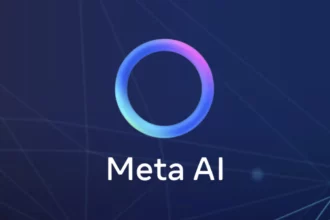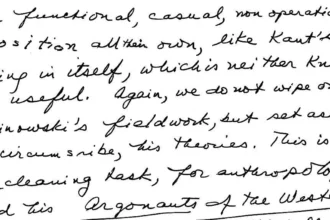Are you ready to unleash the power of the Transformer? No, we’re not talking about the shape-shifting robots from the movies. We’re diving into the fascinating world of training Transformers, a cutting-edge architecture revolutionizing the field of natural language processing. Whether you’re a tech enthusiast, a data scientist, or simply curious about the latest advancements in AI, this blog post is your ticket to understanding the inner workings of the Transformer model. So fasten your seatbelts and get ready for an electrifying journey into the realm of Training Transformers!
Table of Contents
ToggleUnderstanding the Transformer Architecture
Imagine a grand symphony, where each instrument plays its unique role, yet all unite to create a harmonious melody. In the realm of deep learning, Transformers are akin to such an orchestra, harmonizing the complexity of data into an insightful composition. This neural network architecture has carved its niche, enjoying the limelight for its ability to handle vast seas of data with remarkable efficiency.
At the heart of this architecture lies the attention mechanism, a sophisticated conductor that ensures each data token, akin to a musical note, is given due regard. This mechanism enables the model to weigh and relate different parts of the input data simultaneously. By weaving these relationships across successive layers, Transformers achieve a depth of understanding that is both comprehensive and contextually aware.
It’s no wonder that leading AI research institutes, such as OpenAI and DeepMind, have embraced Transformers with open arms. Like master composers, they have orchestrated their AI models, with Transformers playing a crucial role in language understanding and strategic gameplay, respectively.
But what makes the Transformer truly stand out is its speed. In the digital era, where time is as valuable as data, the Transformer’s ability to process all tokens at once is a game-changer. This parallel processing, unlike the sequential processing of yesteryears, catapults training speed to new heights, making it highly compatible with modern hardware.
To encapsulate the essence of Transformers and their pivotal role in deep learning, let’s glance at a table summarizing their hallmark traits:
| Aspect | Description |
|---|---|
| Architecture | Neural network design popular for handling parallel data processing |
| Attention Mechanism | Processes all tokens simultaneously, establishing “soft” relationships |
| Application | Used by OpenAI in language models and by DeepMind in AlphaStar |
| Efficiency | Designed for parallel computation, enhancing training speed significantly |
| Relevance in AI | Improves performance in NLP tasks and strategic game playing |
With such a transformative approach, it’s clear why the Transformer architecture is not just a fleeting trend, but a cornerstone in the evolution of artificial intelligence. As we delve deeper into the intricacies of this architecture in the following sections, we will uncover why and how this model has become the backbone of many cutting-edge AI applications.
Transformers and GPT Models
The advent of the Transformer architecture was akin to the unveiling of an intricate tapestry where each thread is interwoven with precision, contributing to a larger, stunning picture of AI capabilities. These threads are not merely static; they dance and adapt, thanks to the dynamic nature of the self-attention mechanism. And at the forefront of this evolution stands the Generative Pretrained Transformer (GPT) models, a tour de force that has reshaped our approach to language.
Imagine a scholar, fluent in the nuances of countless languages, capable of composing poetry, cracking jokes, and solving complex problems. This is the essence of GPT models. They are the digital embodiment of such a scholar, with the transformer neural network serving as the brain where self-attention is the cognitive process allowing it to consider each word, not in isolation, but as part of a larger context.
Let’s delve into how this sophisticated machinery operates. In a GPT model, each word or token in a sentence is not just a solitary island but part of an intricate archipelago. The self-attention mechanism is like a lighthouse, casting its beam across the waters, illuminating connections between these islands. During processing, it selectively intensifies its focus on specific parts of the input text, allowing the model to generate responses with a nuanced understanding of context and meaning.
When it comes to the newest progeny of this lineage, GPT-4, we witness a landmark achievement in artificial intelligence. It stands on the shoulders of its predecessors, leveraging the transformer architecture to an unprecedented extent. With each iteration, GPT models have become more adept at language tasks, setting new benchmarks for natural language processing and text generation.
The signature trait of transformers in these models is their affinity for parallel computation. Where traditional neural networks process data sequentially, transformers like GPT thrive on doing many things at once. This is not just a matter of speed, but of depth. By simultaneously considering multiple facets of the data, transformers achieve a rich, multidimensional understanding of language.
The training of these transformer models is a dance of complexity and elegance. The layers of a GPT model work in concert, each one learning to assign “soft” weights to tokens, with these weights signifying the strength of their relationships. As the model processes text, it does so with an eye to the intricate web of context that underlies language, thus capturing the subtleties that give language its power.
In the grand tapestry of AI, transformers and GPT models are not just threads; they are vibrant colors that bring the picture to life. As we move forward, these models promise to continue pushing the boundaries of what machines can understand and create with words.
Challenges in Training Transformers
The digital odyssey of refining Transformer models is akin to the meticulous crafting of a grand symphony, where each note must harmonize impeccably with the next. Much like a maestro faces the daunting task of aligning every instrument to achieve a perfect ensemble, AI engineers confront formidable trials when it comes to training these sophisticated models. The crux of the challenge lies in managing long sequences of data, which are the intricate melodies within our symphony of language.
Imagine attempting to weave a tapestry with an expansive breadth, the sheer scale necessitates an exponential increase in thread and effort. Similarly, as we double the sequence length in a Transformer model, the computational complexity does not merely double; it skyrockets, quadrupling the runtime and memory requirements. This exponential surge is due to the compute and memory bottleneck inherent in the Transformer’s attention layer, turning the training process into a Herculean task.
The size of these Transformer models is a double-edged sword. On one edge, their vastness allows the capture of the subtlest nuances and the most complex patterns within the fabric of language. On the other, they demand longer training durations, guzzle up more computational resources, and move at a more ponderous pace. This is the paradox of Transformer training – the pursuit of linguistic precision comes at the cost of speed and efficiency.
Despite these obstacles, the inherent design of Transformers is a masterpiece of efficiency. They eschew the sequential operations of their predecessors for a concert of serial operations, enabling a parallel processing of words that aligns perfectly with the capabilities of modern hardware. The attention mechanism, a pivotal component of Transformer models, simultaneously evaluates each word in relation to the entire sequence, allowing for a multitude of sequences to be processed concurrently. This parallelism is the linchpin that grants Transformers their remarkable proficiency.
It is the synergy of these elements – the balance between the reach of the model and the constraints of computation – that makes training Transformers a formidable yet fascinating endeavor. Like our maestro who must consider the capabilities of each musician and the limitations of their instruments, AI practitioners must navigate the intricacies of Transformer training with a blend of technical prowess and creative intuition.
As we delve deeper into the universe of Transformers, we recognize that these challenges are not mere hurdles but stepping stones that lead to a greater understanding of both the models themselves and the language they are designed to interpret. With every refinement and every adjustment, the AI community edges closer to that symphonic ideal – a machine that understands and generates human language with an elegance that rivals our own.
Let us continue to explore this journey, understanding that the path to mastery is often laden with challenges, each one an opportunity to learn, to adapt, and to ultimately triumph.
Transformers in Electricity Management
In the intricate dance of modern infrastructure, transformers are the unsung heroes orchestrating the flow of electrical energy. These pivotal devices serve a role analogous to the sophisticated Transformer models in deep learning—ingenious at changing form, yet here it’s the voltage of electricity that’s being transformed rather than data.
Think of a transformer as a conductor in an electrical symphony, taking in the high-voltage electricity’s roaring crescendo from power plants and then, with a deft flick, modulating it into a gentle adagio suitable for homes and businesses. This ballet of voltage is accomplished through a simple yet elegant manipulation of coil ratios.
Their duty is profound: to step-up or step-down voltage, enabling electricity to travel across vast distances without losing its vitality. This is achieved by adjusting the ratio of coils from the primary to the secondary windings—a process that is as crucial as it is commonplace in our electrified world.
From the colossal power transformers that guide electricity’s journey from generation to distribution, to the more specialized autotransformers that tweak voltage levels with a shared winding, each type serves its purpose. There are generator step-up transformers that bolster the voltage from power stations, ensuring the energy can travel far and wide, and auxiliary transformers that take on the task of powering the very systems that generate our electricity.
But why do transformers operate with such efficiency? In a word: design. By favoring parallel operations over sequential ones, transformers can handle multiple voltage conversions simultaneously, much like their deep learning namesakes process data with their parallel attention mechanisms. This architectural choice ensures a robust and reliable electrical grid, capable of meeting the dynamic demands of our energy-hungry civilization.
Even as we marvel at the intelligence of advanced AI models, it’s worth remembering the quiet intelligence embedded within the power grid, courtesy of the humble yet powerful transformer. As we proceed to explore the practical applications of Transformer models, let’s carry forward the appreciation for the transformative capabilities found in both realms of engineering.
Practical Applications of Transformers
The versatility of transformers is akin to a chameleon’s adaptability, seamlessly blending into a myriad of environments. In the electrical realm, they are the silent sentinels that ensure our gadgets hum with life while safeguarding the intricate dance of electrons over vast networks. Their ability to modify voltage is nothing short of alchemical, transforming the ferocity of high-voltage currents into a gentle flow that powers the most delicate of our household treasures.
Imagine the comforting warmth of your morning coffee; it’s made possible because a transformer somewhere has tamed the wild current to suit your coffee maker. These devices, whether perched on power poles or nestled within our walls, adjust voltage to nurture our daily conveniences. From the subtle chime of doorbells to the vibrant tracks of toy electric trains, transformers serve as the unseen custodians of our comfort.
Yet, their duty extends beyond the confines of our homes. They are the backbone of our power infrastructure, elevating the voltage from electric generators with precision. This allows electricity to embark on long-distance voyages across the power lines with minimal loss, ensuring that the energy generated at power plants reaches our cities and industries in the most efficient way possible.
The role of a Transformer Technician is therefore one of both finesse and significance. With an average hourly wage of $26.84, their expertise in managing these voltage virtuosos is highly valued. They are tasked with the meticulous calibration of transformers, ensuring each ratio of coils is configured to perfection, a balance that dictates the very rhythm of our electrical consumption.
Delving into the diverse types of transformers, we encounter three primary variants: electromagnetic, capacitor, and optical. The electromagnetic voltage transformer, a classic wire-wound component, lies at the heart of many power systems. Capacitor voltage transformers harness a capacitance potential divider, shining in high-voltage scenarios where cost and efficiency must be married. The optical variety, a more recent innovation, uses advanced technology to measure electric voltage through light—a testament to the transformative evolution of these pivotal devices.
In essence, transformers are the quiet maestros of the electrical orchestra, directing currents with an invisible baton, ensuring that every appliance, every industrial machine, and every flickering streetlight receives the precise voltage it requires. Their omnipresence in our electrical ecosystem is a narrative of reliability and ingenuity—a symphony played out in silence, yet resounding with significance.
Q: How does Transformer training work?
A: Transformer training involves the use of an attention mechanism, where all tokens are processed simultaneously. Soft weights are calculated between the tokens in successive layers. This attention mechanism allows for parallel computation of information about other tokens, leading to improved training speed.
Q: Are Transformers difficult to train?
A: Yes, training Transformers on long sequences can be challenging. The attention layer, which is a crucial component of Transformers, becomes a bottleneck in terms of compute and memory. Doubling the sequence length would quadruple the runtime and memory requirements.
Q: Why are Transformers slow to train?
A: The size of Transformer models plays a significant role in their training speed. Larger models with more parameters and layers can capture complex patterns and nuances, but they also require more time, resources, and computational power to train and run.
Q: What is a Transformer in deep learning?
A: In deep learning, Transformers are a type of neural network architecture that has gained popularity. They have been used by OpenAI in their language models and by DeepMind in their program, AlphaStar, to defeat a top professional Starcraft player.





